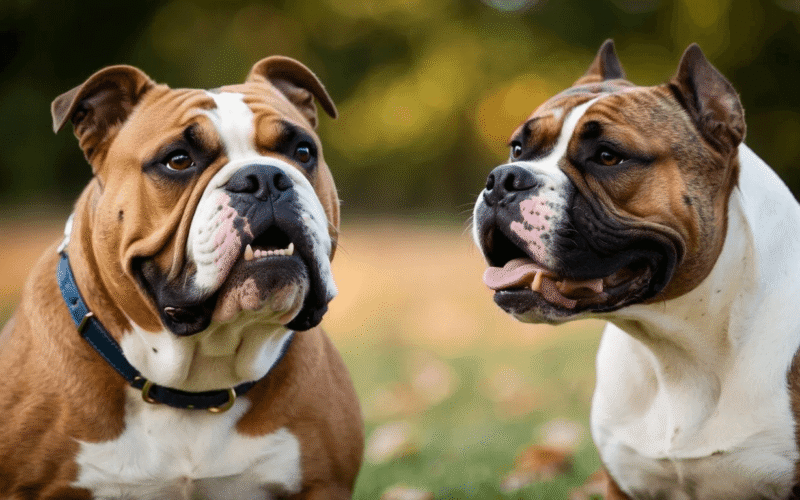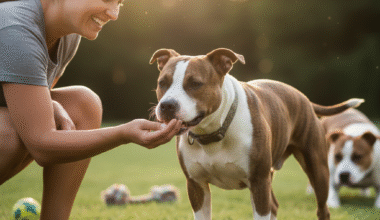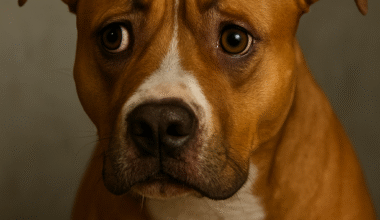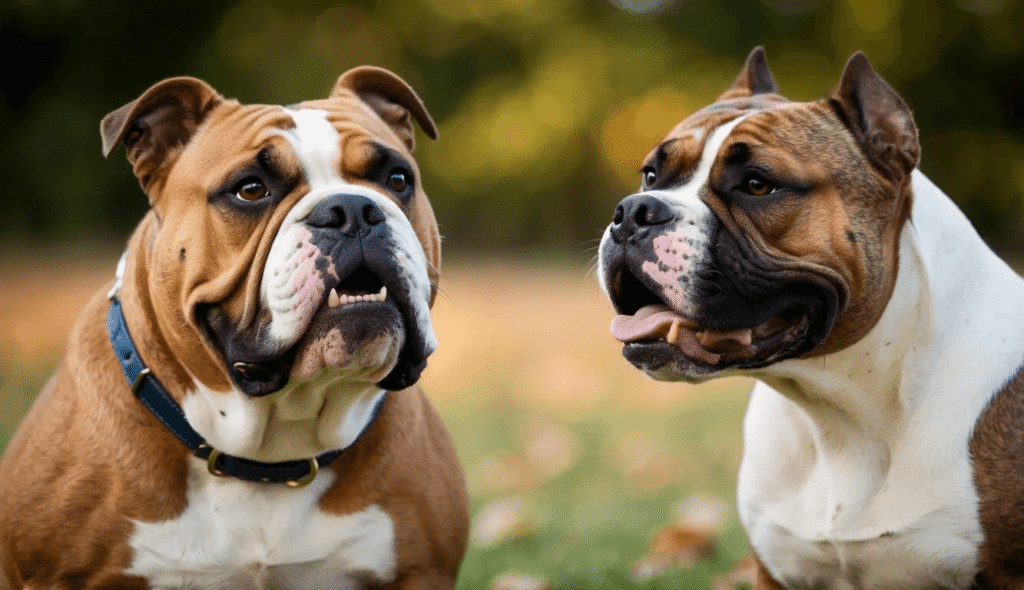
You grab your keys and head toward the door. Behind you, your pit bull’s eyes widen, their ears flatten, and within seconds, the whining begins. By the time you close the door, they’re pacing, barking, or clawing at the floor. If this scene feels all too familiar, you’re not alone; separation anxiety is one of the most common struggles pit bull owners face.
The good news? With patience, consistency, and the right strategies, you can help your pit bull build the confidence and trust they need to stay calm when you’re away. In this guide, we’ll explore why pit bulls are especially prone to separation anxiety, the telltale signs to look for, and most importantly, proven, step-by-step ways to ease their stress and strengthen your bond.
1. Understanding Separation Anxiety in Pit Bulls
Separation anxiety in pit bulls is more than just a little whining when you leave—it’s a deep emotional struggle that can affect your dog’s well-being and your household harmony. Pit bulls are known for their loyalty and affectionate nature. They thrive on companionship, which makes them especially prone to separation anxiety compared to some other breeds. Understanding what separation anxiety looks like and why it happens is the first step toward helping your pit bull feel safe and secure.
What Separation Anxiety Looks Like in Pit Bulls
Many pit bull owners notice destructive or frantic behaviors when their dog is left alone. These signs can include:
- Excessive barking, whining, or howling.
- Destructive chewing on doors, furniture, or personal belongings.
- acing, drooling, or panting heavily when you’re gone.
- Accidents in the house despite being potty-trained.
- Extreme excitement or even frantic behavior when you return home.
While these behaviors can feel frustrating, they are rooted in fear and insecurity, not stubbornness or misbehavior. Recognizing them as signs of distress instead of disobedience helps you approach the problem with compassion.
Why Pit Bulls Are Especially Prone to Anxiety
Pit bulls were bred to be people-oriented companions. Their deep bond with their humans, while beautiful, also means they can struggle with independence. Many pit bulls in rescue or shelter situations may have also experienced abandonment or trauma, making them more likely to develop separation anxiety.
Pit bull parents often describe their pups as “velcro dogs” because they love being close. While this devotion is one of their most endearing traits, it can also mean they feel lost when suddenly left on their own.
By understanding the signs and causes of separation anxiety in pit bulls, owners can better address the behavior with patience and empathy. In the next section, we’ll explore the common root causes behind this anxiety and why some pit bulls seem to struggle more than others.
2. The Root Causes of Separation Anxiety in Pit Bulls
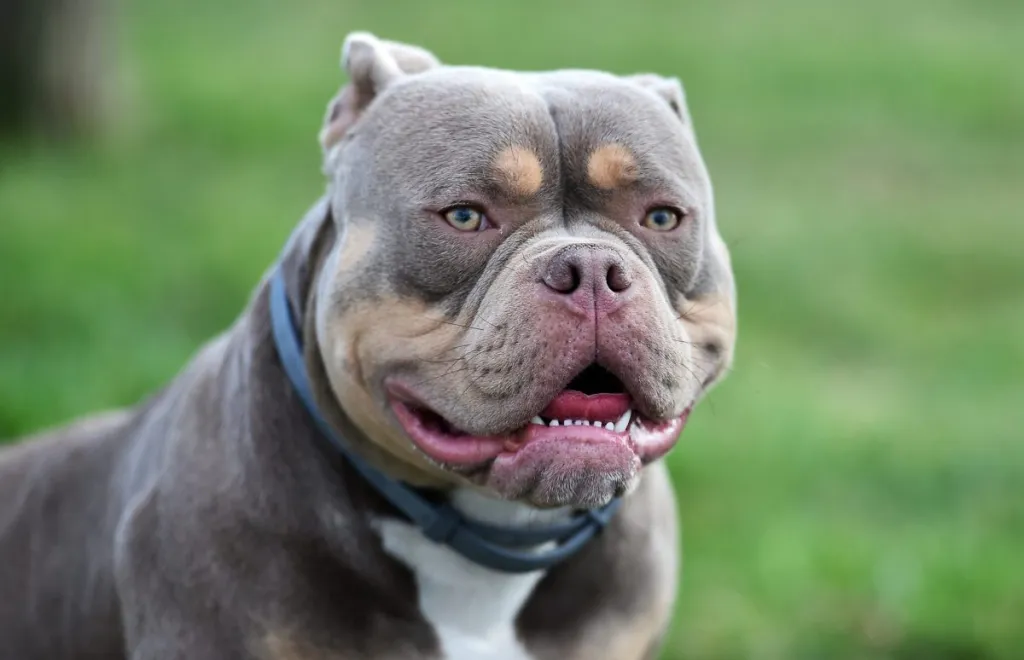
Separation anxiety in pit bulls doesn’t appear out of nowhere. It often stems from past experiences, upbringing, or sudden lifestyle changes. Knowing these root causes can help you tailor your approach when building confidence in your pit bull.
Early Trauma or Rescue Backgrounds
Many pit bulls are adopted from shelters or rescues. While adoption is life-changing in the best way, it’s not uncommon for these dogs to have experienced abandonment, neglect, or multiple rehoming situations. These experiences leave scars and can make them fearful of being left alone again.
Lack of Early Independence Training
Puppies who are rarely left alone during their early development stages can struggle later in life. Pit bull parents who spend all day with their puppy may unintentionally foster dependency. Without structured time apart, the pup doesn’t learn that being alone is safe. Find more tips and Techniques on how to Train A Pitbull
Overattachment to Owners
Pit bulls naturally form strong attachments. If they are rarely apart from their human, this attachment can grow into unhealthy dependence. The dog associates safety only with the presence of their parent, leading to panic when separated.
Sudden Lifestyle Changes
Dogs thrive on routine, and pit bulls are no exception. Moving to a new home, a new family member, or even a change in work schedule can throw them off balance. These shifts may trigger or worsen separation anxiety.
Myth Busting: Separation anxiety in pit bulls is not about “bad behavior” or revenge. It is an emotional response rooted in fear and insecurity.
When pit bull lovers understand the reasons behind their dog’s anxiety, it becomes easier to address the behavior with targeted strategies. Next, we’ll focus on building your pit bull’s confidence through practical training and daily routines.
3. How to Build Confidence in Your Pit Bull
Helping your pit bull overcome separation anxiety starts with boosting their confidence and independence. By teaching them that being alone is not scary, you can gradually replace panic with calmness.
Start with Small Independence Training
Begin by leaving your pit bull in a room alone for just a minute or two, then return calmly. Over time, increase the duration. The key is to build trust slowly so your pit bull learns that you always come back.
Create a Safe Space
Pit bulls respond well to having a designated area where they feel secure. A crate (when introduced positively), a cozy bed, or a quiet corner can serve as their retreat. Add favorite toys, chew items, and even clothing with your scent to comfort them.
Build a Predictable Routine
Routine provides stability. Feed, walk, and play with your pit bull at consistent times each day. This reduces anxiety because your pup knows what to expect and when.
Use Positive Reinforcement
Reward calm and independent behavior. If your pit bull stays relaxed when you step away, praise them or offer a small treat. Training simple commands like “stay” or “place” also strengthens confidence.
Incorporate Physical and Mental Stimulation
A tired dog is a calmer dog. Daily exercise, such as long walks, fetch, or tug-of-war, helps burn excess energy. Pair physical activity with mental challenges like puzzle toys or scent games to keep their mind engaged.
Practice Desensitization to Departure Cues
Pit bulls often associate cues like grabbing keys or putting on shoes with being left alone. Practice these actions without leaving so they no longer trigger panic.
With consistency, these strategies help pit bulls gain independence and ease separation anxiety. In the next section, we’ll look at specific tools and techniques that can make the process smoother.
4. Tools & Techniques to Support Anxiety
Alongside training, certain tools and techniques can provide extra comfort for pit bulls dealing with separation anxiety. These resources help bridge the gap while you build long-term confidence.
Soothing Aids
- Calming chews or supplements: Many pit bull owners find natural remedies like chamomile or CBD chews helpful.
- Pheromone diffusers: These release calming scents that mimic natural signals, helping your pit bull feel safe.
- Weighted blankets: The gentle pressure can provide comfort, much like a hug.
Background Comfort
- Music or white noise: Leaving calming music or background sounds helps drown out external noises that may trigger anxiety.
- TV or audio recordings: Some pit bulls respond positively to familiar voices, which creates a sense of companionship.
Technology Tools
Pet cameras allow you to monitor your pit bull and reassure them with your voice.
Treat-dispensing devices: Keep your dog engaged and reward calm behavior even when you’re not home.
Professional Support
For pit bulls with severe separation anxiety, professional help can be a game-changer. Certified dog trainers and veterinary behaviorists can create tailored programs that fit your dog’s needs.
These tools should complement, not replace, training. When used together, they create an environment where your pit bull feels supported. Next, we’ll explore the common mistakes owners make and how to avoid setbacks in your training journey.
5. Mistakes to Avoid
When tackling separation anxiety in pit bulls, good intentions can sometimes backfire. Being aware of common mistakes helps you stay on track and avoid worsening the issue.
Punishing Anxious Behavior
Pit bull parents sometimes get frustrated with chewing, barking, or accidents. But punishing your pit bull only increases fear and stress. Anxiety isn’t misbehavior—it’s an emotional response.
Over-Dramatic Goodbyes and Hellos
Lavishing attention before leaving or upon returning may heighten your pit bull’s anxiety. Instead, keep departures and arrivals calm and low-key. This teaches your pup that coming and going are normal parts of the day.
Expecting Quick Fixes
Overcoming separation anxiety in pit bulls takes time. Rushing the process or expecting overnight results can set back progress. Patience and consistency are your best tools.
Inconsistent Training
Sometimes owners change routines or skip training sessions. Inconsistency confuses your pit bull and undermines their confidence. Stick to your plan daily.
Avoiding these mistakes allows your pit bull to progress steadily. With the right approach, even severe cases can improve over time. In the next section, we’ll highlight real-life success stories that show just how powerful patience and dedication can be.
6. Real-Life Success Stories
Pit bull owners worldwide have seen remarkable transformations when tackling separation anxiety with patience and the right strategies. These stories inspire hope and remind us that change is possible.
Case Study: Bella the Rescue Pit
Bella was adopted after spending months in a shelter. Her new family quickly noticed severe separation anxiety—destructive chewing, nonstop barking, and house accidents. With gradual independence training, puzzle toys, and pheromone diffusers, Bella learned to stay calm during short absences. After six months, she could be left alone for hours without panic.
Case Study: Max the Velcro Dog
Max followed his owner everywhere and panicked when left alone. His parent started crate training with positive reinforcement, paired with daily exercise and mental games. Max’s crate became his safe place, and over time, his anxiety decreased significantly.
Case Study: Daisy the Overattached Puppy
Daisy was rarely apart from her owner during puppyhood. When left alone for the first time, she displayed destructive behaviors. By practicing short departures, using background music, and rewarding calmness, Daisy slowly built independence.
These real-life examples prove that separation anxiety in pit bulls can be managed successfully. Next, we’ll bring everything together with final strategies to help your pit bull thrive with confidence and trust.
7. Building a Happier, More Confident Pit Bull

Separation anxiety in pit bulls doesn’t have to define your relationship with your dog. With the right strategies, tools, and consistency, you can transform fearful behaviors into calm independence.
Start by recognizing the signs of separation anxiety, then address the root causes with empathy. Gradually build your pit bull’s confidence using independence training, routines, and mental stimulation. Incorporate supportive tools like calming aids and technology, and avoid common mistakes that hinder progress.
Remember that every pit bull is unique. Some may respond quickly, while others need more time. Celebrate small victories and stay consistent; your patience will pay off.
As pit bull lovers and parents, we want the best for our dogs. Helping them overcome separation anxiety strengthens not just their confidence but also the incredible bond you share. With dedication, your pit bull can learn that being alone doesn’t mean being unsafe; it’s simply another part of their day.
Tap here to explore proven ways to make your pit bull happier, more confident, and free from separation anxiety
Conclusion
Separation anxiety in pit bulls can feel overwhelming, but it doesn’t have to control your dog’s life or yours. By understanding the signs, addressing the root causes, and applying confidence-building strategies, pit bull owners can transform anxious behaviors into calm, secure habits. From structured independence training to soothing tools and consistent routines, each step you take helps your dog feel safer and more confident when left alone.
Remember, progress takes time. Pit bulls are naturally affectionate and people-oriented, which is why separation anxiety in pit bulls is so common. But with patience, empathy, and the right techniques, you can ease their fears and strengthen the trust you share. Every small win, whether it’s a calmer departure or a successful quiet moment alone, is proof that your pup is learning to thrive.
If you’re ready to help your pit bull overcome separation anxiety, start today with one of the tips from this guide. Share this post with fellow pit bull lovers, or reach out to a professional trainer if you need extra guidance. Your consistency and care will not only reduce anxiety but also deepen the incredible bond you already have with your loyal companion.

